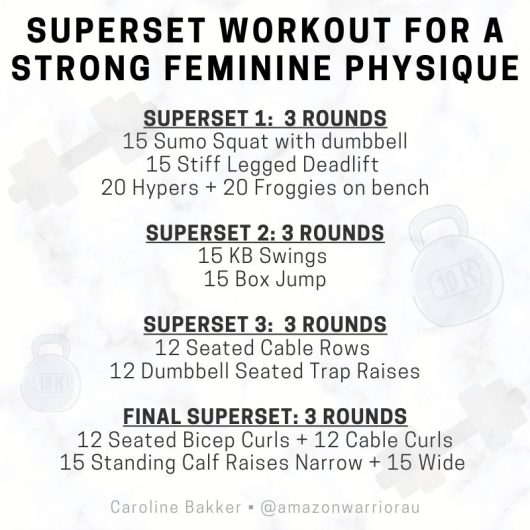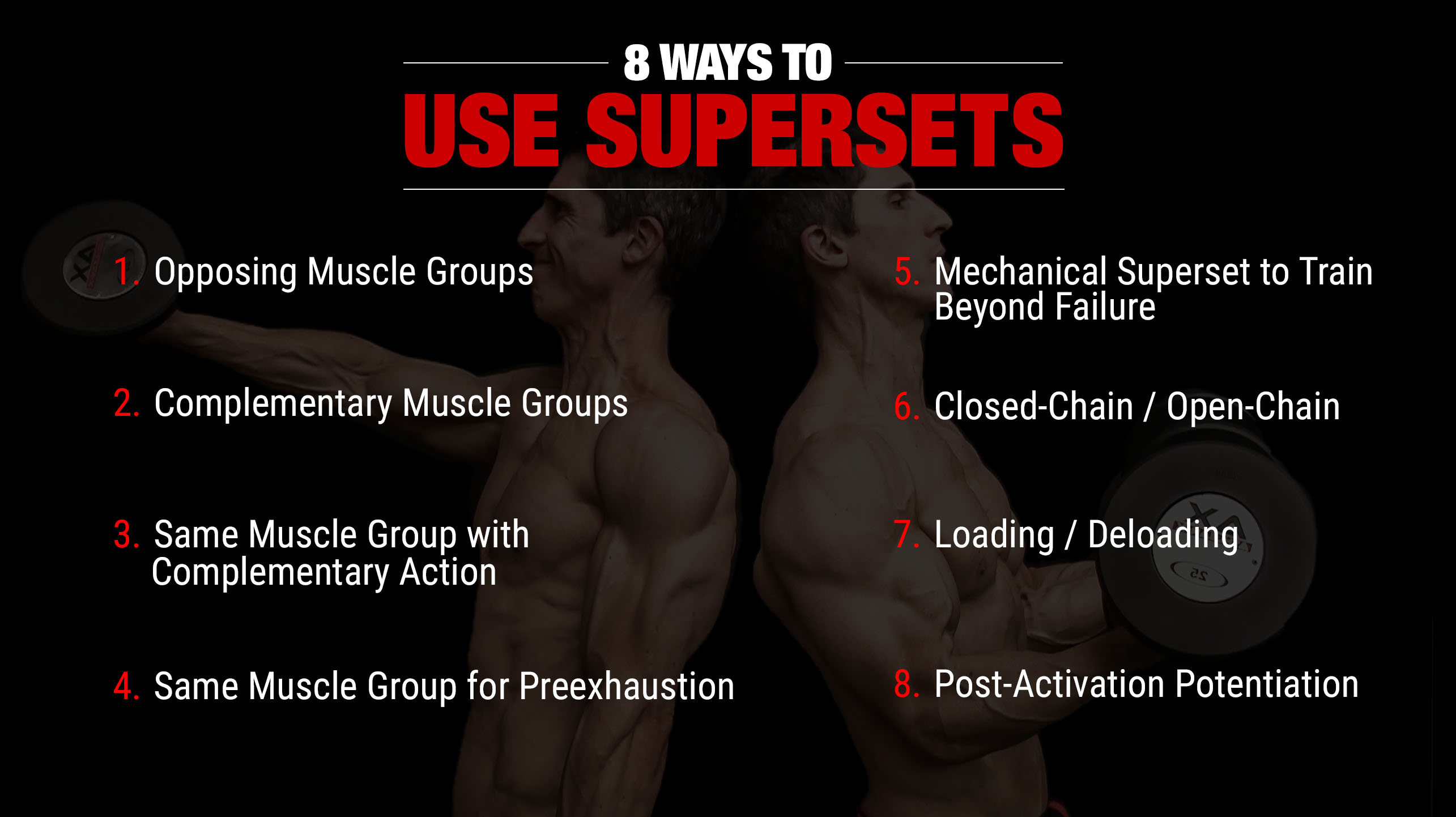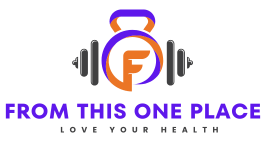Have you ever wondered what other exercises you can do to enhance the effectiveness of your squats? Well, you’re in luck because we’re here to tell you about some effective superset exercises that you can pair with your squats to take your leg workout to the next level. Squats are an excellent compound exercise that targets multiple muscle groups in your lower body.
However, by incorporating supersets into your workout routine, you can maximize your gains and challenge your muscles even more. So, let’s dive in and explore some great superset options that will complement your squats perfectly!
When it comes to supersetting with squats, there are several exercises you can choose from. One popular option is the walking lunge. This exercise not only strengthens your quadriceps, hamstrings, and glutes, but it also helps improve your balance and stability. Another effective superset exercise for squats is the step-up. This exercise primarily targets your quadriceps and glutes while also engaging your hamstrings and calves.
You can also consider incorporating Bulgarian split squats into your superset routine. This exercise challenges your quads, glutes, and hamstrings, providing an excellent complement to your squats. By adding these exercises to your leg workout routine, you’ll stimulate different muscle fibers and promote overall muscle growth. So, stay tuned for more tips and details on how to perform these supersets effectively in the upcoming article!

Effective Superset Exercises for Squats
If you’re looking to take your squat workouts to the next level, it’s time to start incorporating superset exercises into your routine. Supersetting involves performing two different exercises back-to-back with little to no rest in between. This method not only helps to increase the intensity of your workouts but also allows for efficient use of time. In addition, supersetting can provide muscle confusion, leading to better gains. In this article, we will explore the benefits of superset exercises, understand how to properly execute squats, and discuss various exercises that can be effectively supersetted with squats.
Benefits of Superset Exercises
Increased Intensity and Calorie Burn
Supersetting exercises adds an extra challenge to your workouts by keeping your muscles constantly engaged. By performing two exercises consecutively, you are able to target different muscle groups without giving them a chance to fully recover. This not only leads to increased muscle activation but also results in a higher calorie burn. The increased intensity of superset workouts can help you break through plateaus and achieve your fitness goals faster.
Efficient Use of Time
One of the biggest advantages of supersetting is that it allows you to maximize your time at the gym. By performing exercises back-to-back, you eliminate the need for long rest periods in between sets. This not only helps you finish your workouts in a shorter amount of time but also keeps your heart rate elevated, leading to improved cardiovascular fitness. Superset exercises are the perfect solution for those who have a busy schedule and are looking to get an effective workout in a limited amount of time.
Muscle Confusion for Better Gains
Superset exercises introduce variety into your routine, providing muscle confusion that can lead to better gains. When you perform the same exercises repeatedly, your muscles adapt to the movement, causing your progress to plateau. By incorporating superset exercises into your routine, you challenge your muscles in new ways, forcing them to continually adapt and grow. This variety helps avoid workout boredom and keeps you motivated to push yourself further.

Understanding Superset Training
Definition and Concept
Supersets involve performing two exercises, usually targeting different muscle groups, consecutively without resting in between. The aim of superset training is to maximize muscle activation and increase the overall intensity of your workouts. There are different types of supersets, including antagonistic supersetting (working opposing muscle groups), compound supersetting (targeting multiple muscle groups), and pre-exhaustion supersetting (targeting the same muscle group with two different exercises).
Types of Superset Exercises
There are several ways to structure superset exercises, depending on your fitness goals and preferences. Some common types of superset exercises include:
- Upper Body Supersets: Combining exercises that target the upper body, such as barbell bicep curls, dumbbell shoulder press, tricep dips, and push-ups.
- Lower Body Supersets: Pairing exercises that focus on the lower body, such as walking lunges, Romanian deadlifts, calf raises, and glute bridges.
- Core Supersets: Performing exercises that engage the core, such as planks, Russian twists, hanging leg raises, and oblique crunches.
How Supersetting Affects Muscle Groups
Supersetting exercises can be strategically planned to target specific muscle groups and achieve specific training goals. By supersetting exercises that work opposing muscle groups, you can maximize your workout efficiency and minimize rest time. Additionally, supersetting can help maintain muscle balance and prevent muscle imbalances that can lead to injuries. It also allows you to work multiple muscle groups simultaneously, resulting in a more functional and comprehensive workout.
Importance of Superset Exercises for Squats
Enhanced Muscular Strength and Endurance
Supersetting exercises with squats can enhance your muscular strength and endurance. Squats are a compound exercise that activates multiple muscle groups, including the quadriceps, hamstrings, glutes, and core. By performing superset exercises that engage these muscle groups, you are able to further challenge and strengthen them. This can lead to improved overall strength and endurance, allowing you to lift heavier weights and perform more repetitions.
Improved Explosive Power
Supersetting exercises that involve explosive movements with squats can improve your explosive power. Explosive exercises, such as plyometric jumps or box jumps, require a quick and forceful contraction of the muscles. By incorporating these exercises as superset exercises with squats, you are training your muscles to generate more power and explosiveness. This can be particularly beneficial for athletes who require explosive movements in their sports.
Added Challenge for Advanced Lifters
Supersetting exercises can provide an added challenge for advanced lifters who are looking to push their limits. By combining squats with other compound exercises, such as deadlifts or lunges, you are taxing multiple muscle groups and pushing your body to its limits. This type of advanced superset training can help break through plateaus and continue to make progress in your strength training journey.

Proper Technique and Form for Squats
Before incorporating superset exercises with squats into your workout routine, it’s essential to understand and master the proper technique and form for squats.
Foot Positioning
Stand with your feet shoulder-width apart, toes slightly pointed outward. This positioning helps maintain stability and ensures proper alignment throughout the movement. Experiment with different foot positions to find what feels most comfortable for you.
Back Alignment
Engage your core and maintain a neutral spine throughout the squat movement. Avoid leaning too far forward or rounding your back. Keeping your chest lifted and shoulder blades pulled back will help maintain proper back alignment.
Range of Motion
When performing squats, aim to achieve a 90-degree bend in your knees. Lower your body down as if you are sitting back into a chair, keeping your weight in your heels. Avoid allowing your knees to extend beyond your toes, as this can put excess strain on your knee joints.
Breathing Techniques
Proper breathing is crucial during squats. Inhale deeply as you lower your body down and exhale forcefully as you push back up to the starting position. Focusing on your breath will help stabilize your core and provide more power during the lift.
Supersetting Upper Body Exercises with Squats
To effectively superset upper body exercises with squats, here are some examples of exercises you can incorporate into your routine:
Barbell Bicep Curls
Hold a barbell with an underhand grip, hands shoulder-width apart. Stand with your feet shoulder-width apart and your knees slightly bent. Curl the barbell towards your chest, keeping your elbows close to your body. Lower the barbell back down to the starting position and repeat.
Dumbbell Shoulder Press
Hold a pair of dumbbells at shoulder height, palms facing forward. Stand with your feet shoulder-width apart and your core engaged. Press the dumbbells overhead until your arms are fully extended. Lower the dumbbells back down to shoulder height and repeat.
Tricep Dips
Sit on a bench or chair with your hands gripping the edge of the seat, fingers pointing forward. Extend your legs, keeping your heels on the ground. Lower your body down by bending your elbows until your upper arms are parallel to the ground. Push yourself back up to the starting position and repeat.
Push-Ups
Start in a high plank position with your hands shoulder-width apart, fingers facing forward. Lower your body down by bending your elbows until your chest touches the ground. Push yourself back up to the starting position and repeat.

Supersetting Lower Body Exercises with Squats
To effectively superset lower body exercises with squats, here are some examples of exercises you can incorporate into your routine:
Walking Lunges
Stand with your feet hip-width apart. Take a step forward with your right foot and lower your body down into a lunge position, ensuring that your right knee is directly above your ankle. Push off with your right foot and bring your left foot forward, repeating the lunge on the other side. Continue walking forward, alternating legs with each step.
Romanian Deadlifts
Hold a barbell or a pair of dumbbells in front of your thighs, palms facing your body. Stand with your feet hip-width apart and your knees slightly bent. Hinge at the hips, keeping your back straight and maintaining a slight bend in your knees. Lower the weight as far as your flexibility allows, feeling a stretch in your hamstrings. Squeeze your glutes to return to the starting position and repeat.
Calf Raises
Stand with your feet hip-width apart, toes pointing forward. Raise your heels off the ground, coming onto the balls of your feet. Pause at the top and then slowly lower your heels back down to the starting position. Repeat for the desired number of repetitions.
Glute Bridges
Lie on your back with your knees bent and feet flat on the ground, hip-width apart. Engage your glutes and core, then lift your hips off the ground until your body forms a straight line from your knees to your shoulders. Hold for a moment and then lower your hips back down to the starting position. Repeat for the desired number of repetitions.
Supersetting Core Exercises with Squats
To effectively superset core exercises with squats, here are some examples of exercises you can incorporate into your routine:
Plank
Start in a push-up position, with your hands shoulder-width apart and your body in a straight line from head to heels. Engage your core and hold this position for the desired amount of time.
Russian Twists
Sit on the ground with your knees bent and your feet flat on the floor. Lean back slightly, balancing on your tailbone. Interlace your fingers and hold them in front of your chest. Twist your torso to the right, bringing your hands towards the ground on the right side of your body. Then twist to the left, bringing your hands towards the ground on the left side of your body. Continue to alternate sides.
Hanging Leg Raises
Hang from a pull-up bar with your arms fully extended. Engage your core and use your abdominal muscles to lift your legs up towards your chest. Slowly lower your legs back down to the starting position and repeat.
Oblique Crunches
Lie on your back with your knees bent and feet flat on the ground, hip-width apart. Place your hands behind your head, elbows pointing outward. Engage your core and lift your shoulder blades off the ground, twisting to one side and bringing your right elbow towards your left knee. Return to the starting position and then repeat on the other side.

Creating an Effective Superset Workout Plan
When creating a superset workout plan that incorporates squats, there are several factors to consider:
Considerations for Beginner, Intermediate, and Advanced Levels
The difficulty and intensity of your superset exercises should be tailored to your fitness level. Beginners may start with bodyweight squats and simpler variations of superset exercises, gradually increasing the weights and resistance over time. Intermediate and advanced lifters can incorporate more challenging variations of squats and superset exercises to continue challenging their muscles.
Balancing Opposing Muscle Groups
To prevent muscle imbalances and maintain proper muscle development, it’s important to include superset exercises that target opposing muscle groups. For example, pairing squats with hamstring exercises, such as Romanian deadlifts, can help maintain muscle balance and reduce the risk of injury.
Structuring Sets, Reps, and Rest Periods
The number of sets and reps for each superset exercise will depend on your fitness goals. For strength and muscle building, aim for 3-5 sets of 6-12 reps with a rest period of 60-90 seconds between sets. For endurance and fat loss, aim for 3-4 sets of 12-20 reps with shorter rest periods of 30-60 seconds.
Avoiding Common Mistakes in Superset Training
To get the most out of your superset training, it’s important to avoid common mistakes:
Improper Warm-Up
A proper warm-up is crucial before starting any superset workout. This helps to increase blood flow to your muscles, improve mobility, and reduce the risk of injury. Incorporate dynamic exercises, such as lunges, arm circles, and cat-cow stretches, into your warm-up routine.
Neglecting Proper Recovery
While superset training is effective for maximizing intensity, it’s important to allow your muscles to recover properly. Adequate rest and recovery between workouts are necessary to avoid overtraining and reduce the risk of injury. Listen to your body and adjust your training schedule accordingly.
Overdoing Volume and Intensity
While superset workouts can be intense, it’s important to gradually progress and avoid overdoing the volume and intensity. Push yourself, but also listen to your body’s limits. Gradually increase the weights and resistance over time to continue challenging your muscles without overexertion.
Conclusion
Superset exercises are a powerful tool to enhance your squat workouts and maximize your gains. By incorporating different types of superset exercises into your routine, you can increase the intensity of your workouts, efficiently use your time, and promote muscle confusion for better gains.
Remember to focus on proper technique and form when performing squats and the accompanying superset exercises. Adapt your superset workout plan to fit your fitness level and goals, and avoid common mistakes in superset training. Combine superset exercises with squats to take your fitness journey to new heights. Happy lifting!




